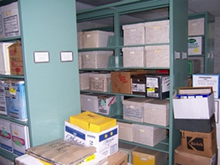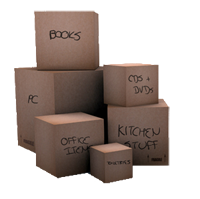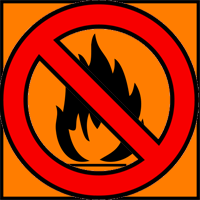- Self Storage is a convenient, safe, and inexpensive way to store your belongings. Proper planning will make for an efficient and cost effective storage experience. If you plan or need to frequently use the space, a larger space may be more convenient than one packed to capacity.
- For your protection, we provide you with a written agreement. Please read it thoroughly and ask any questions. Make note of your payment date. You will be asked to provide us with both an address and phone number for contact purposes. Please notify us in writing of any changes made.
- Plan your storage space. Place items in front that will be accessed frequently. Leave small walkways between the boxes and furniture in your storage unit so you can easily get to the items you want without having to move anything around.
- Make use of loose standings shelves to increase your packing space

- Completely fill each box with your heaviest items on the bottom and lighter items on top. If you’re storing a lot of packing boxes in your unit, try to fill them to the top, even if it’s just with padding and old, crumpled newspapers. Boxes that are only half-filled tend to collapse if anything’s placed on them.
- Try to keep your boxes in uniform sizes. They are much easier to stack that way.
- List contents of boxes on all four sides, number the boxes, seal with masking tape or glued paper tape.

- Leave a small space between the wall and your storage items to allow for ventilation. Laying plastic sheeting on the floor and stacking boxes on top of wooden pallets can prevent condensation damage.
- Make up an inventory of your stored items and keep it in a safe place at home or in a safe deposit box.
- Sofas can be stored on end to save floor space. Always place a protective waterproof cover under the end on the floor. Cushions should be wrapped in plastic and placed on top.
- Cover stuffed furniture with dust cover.
- If you stand mattresses on end, be sure to "prop" them up.
|
- Flammable Solvents and other flammable items. Example of flammable solvents include gasoline, kerosene, motor oil, lubricants, paints and paint removers, nail polish remover, alcohol and any other liquid that might catch fire. Other flammable items include gunpowder, fireworks, ammunition, fertilizers, pool chemicals, propane tanks, mothballs, batteries or any other potentially incendiary materials

- Illegal or stolen goods
- Any living organisms, including houseplants
- Perishable Items. Any food, organic fertilizers, or anything else that could rot
- Any items in pressurised containers. Fire codes typically ban gas tanks, aerosol cans or anything stored under pressure from storage units
- No firearms
- Goods or items of high financial value
|







